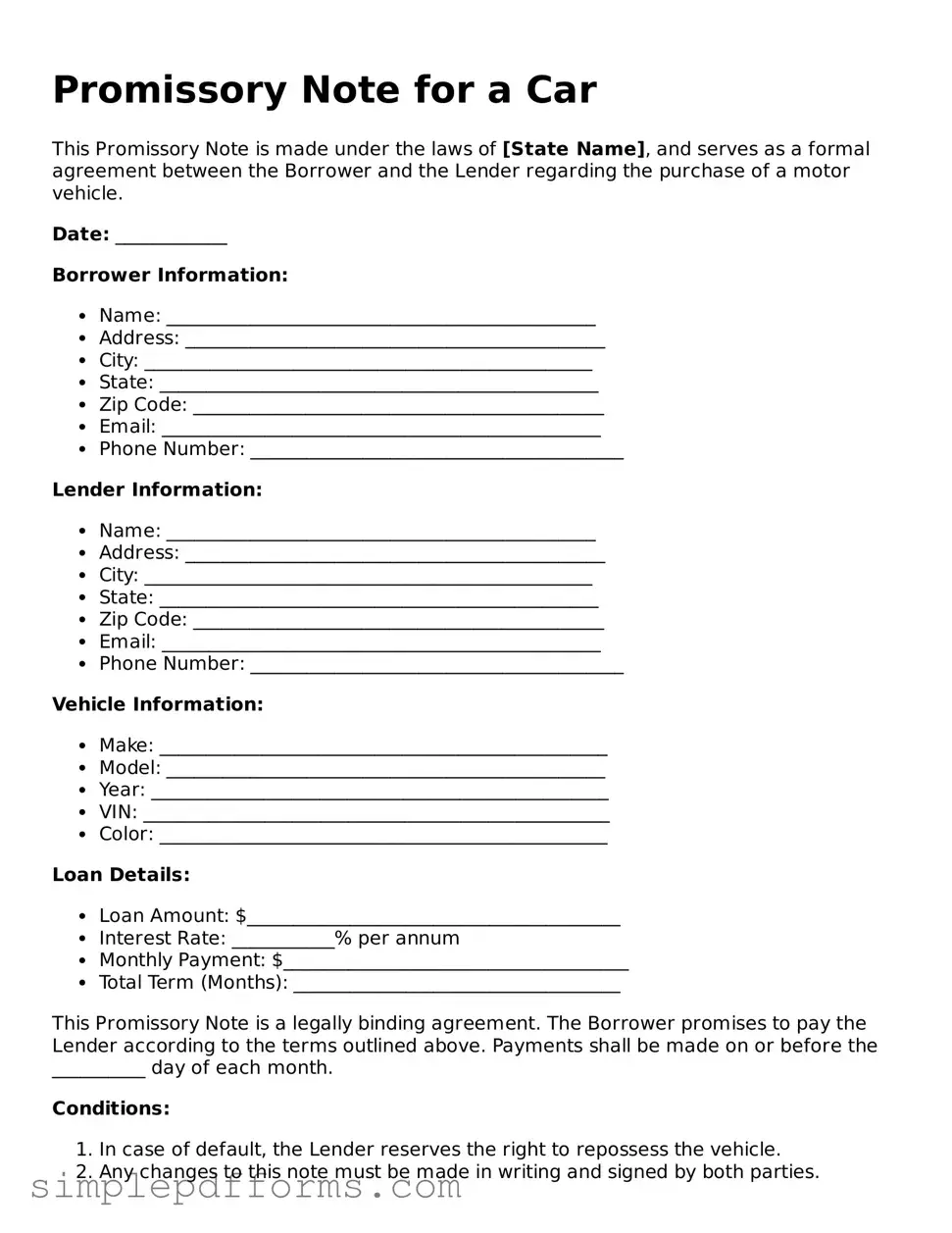Promissory Note for a Car
This Promissory Note is made under the laws of [State Name], and serves as a formal agreement between the Borrower and the Lender regarding the purchase of a motor vehicle.
Date: ____________
Borrower Information:
- Name: ______________________________________________
- Address: _____________________________________________
- City: ________________________________________________
- State: _______________________________________________
- Zip Code: ____________________________________________
- Email: _______________________________________________
- Phone Number: ________________________________________
Lender Information:
- Name: ______________________________________________
- Address: _____________________________________________
- City: ________________________________________________
- State: _______________________________________________
- Zip Code: ____________________________________________
- Email: _______________________________________________
- Phone Number: ________________________________________
Vehicle Information:
- Make: ________________________________________________
- Model: _______________________________________________
- Year: _________________________________________________
- VIN: __________________________________________________
- Color: ________________________________________________
Loan Details:
- Loan Amount: $________________________________________
- Interest Rate: ___________% per annum
- Monthly Payment: $_____________________________________
- Total Term (Months): ___________________________________
This Promissory Note is a legally binding agreement. The Borrower promises to pay the Lender according to the terms outlined above. Payments shall be made on or before the __________ day of each month.
Conditions:
- In case of default, the Lender reserves the right to repossess the vehicle.
- Any changes to this note must be made in writing and signed by both parties.
- This agreement shall be governed by the laws of [State Name].
Both the Borrower and Lender acknowledge that they have read, understood, and agreed to the terms of this Promissory Note.
Borrower Signature: _________________________ Date: ___________
Lender Signature: __________________________ Date: ___________
